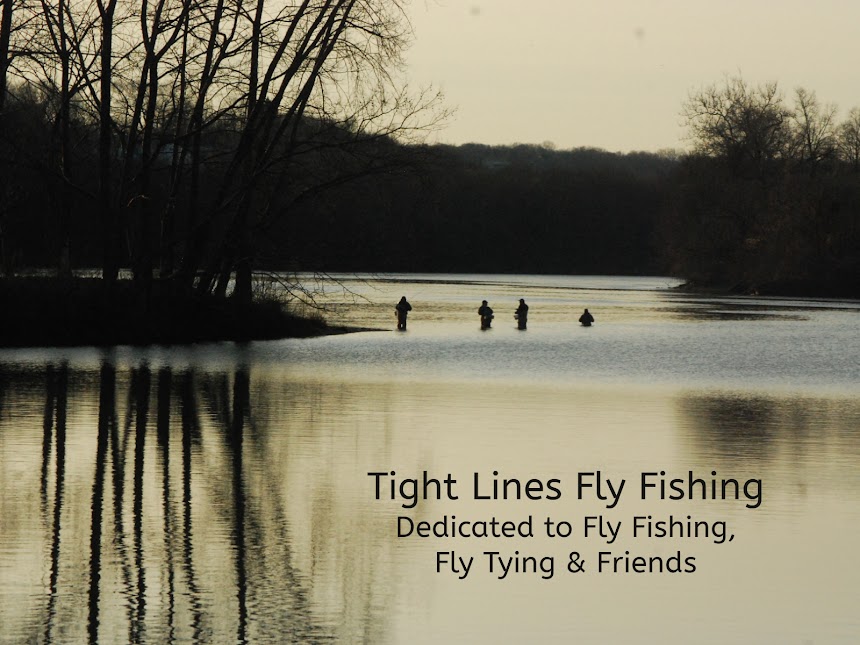Harrington's Deep Rip Deceiver a.k.a. The HDRD
Hook: Gamakatsu#55015 in size #5/0.
Thread: White flymaster.
Tail: Four (4) to six (6) big schlappen hackles
tied deceiver style. Also, flash-a
bou mylar tinsel of choice.
Body: White/pearl crystal chenille. (Optional lead
wraps under the chenille.) (Another option, add a rattle on
the hook shank.)
Throat: White buck tail.
Wing: Chartreuse, purple, or blue buck tail over white
buck tail.
Lateral line: Holographic mylar tinsel.
Eyes: Oversized molded stick-on eyes. Eyes are glued on then epoxied over.
This is a big fly! 8” to 10” long. It is a variation on what’s known as a
“Grocery Deceiver”. It delivers. My friend Mike
Harrington has perfected this pattern. He
uses this fly with deep sinking lines on the Branford Rips. Use the HDRD when you want to use a big fly
to catch a big fish. It’s a great
pattern anywhere, anytime, especially for those striper monsters lurking in the
deep.
This pattern calls for one of
the biggest hooks you’ve ever tied on. If
you can’t find the Gamakatsu hook, tie it on a similar long shank “bait” hook
available at most tackle stores. Begin by starting your thread at the eye of
the hook and wrapping back to the bend.
If you want to really make this fly sink, add some lead wraps to the
shank. Make sure you “thread over” the
lead, then cement or “hard nail” the wraps.
Next tie in your schlappen
hackles so that they extend 5” to 7” beyond the bend of the hook. The hackles are tied in at the stiff base of
the feather. This makes it much more
difficult to “foul” around the hook when it’s fished. Tie in
some strands of mylar flash-a-bou to the flank the tail. Next tie in your crystal chenille, then
palmer it half way up the hook shank.
Tie and clip it off.
The wing of the fly is going
to consist of 2-3 clumps of buck tail.
Try to use buck tail that has a long length to it. You want to profile of the fly to be as large
as possible. You are going to use a
darker buck tail (color of your choice) for your topping. The key element to
tying this fly, and how it differs from other deceivers, is the technique of
“hy-tying” your buck tail wing onto the shank of the hook. Tie the first wing clump of white buck tail
on the top of the hook shank. Once it’s
affixed to the hook, wrap your thread at least 6-8 times around the buck tail
so that it protrudes at approximately a 45 degree angle to the hook shank. Now tie in a similar size clump of white buck
tail for your matching throat. Again,
you are going to “hy-tie” it at a 45 degree angle to the hook shank. Repeat this process one or two other times
along the hook shank to the eye.
Remember, for the last clump
of the wing buck tail, you’re going to use a darker color to mimic the darker
back of a bait fish. Now tie in a small
amount of white buck tail on each side of the fly, parallel to the hook shank
to fill in the body. Next, tie in your
holographic tinsel to serve as the lateral line. Tie off and whip finish fly. Affix your 3D molded eyes to the fly, then
epoxy or use a “light” resin over the eyes and nose of the fly for added
durability. Good luck. You just might catch the “fish of a life
time” with this one.
This fly can also be viewed
at the Housatonic Fly Fishermen’s Association website at www.hffa.net
. If you have
any questions about this fly or would like to submit a Fly of the Month, I can
be reached at 203 305-3850 or e-mail me at pdinice@frontier.com .

.JPG)






.JPG)
.JPG)